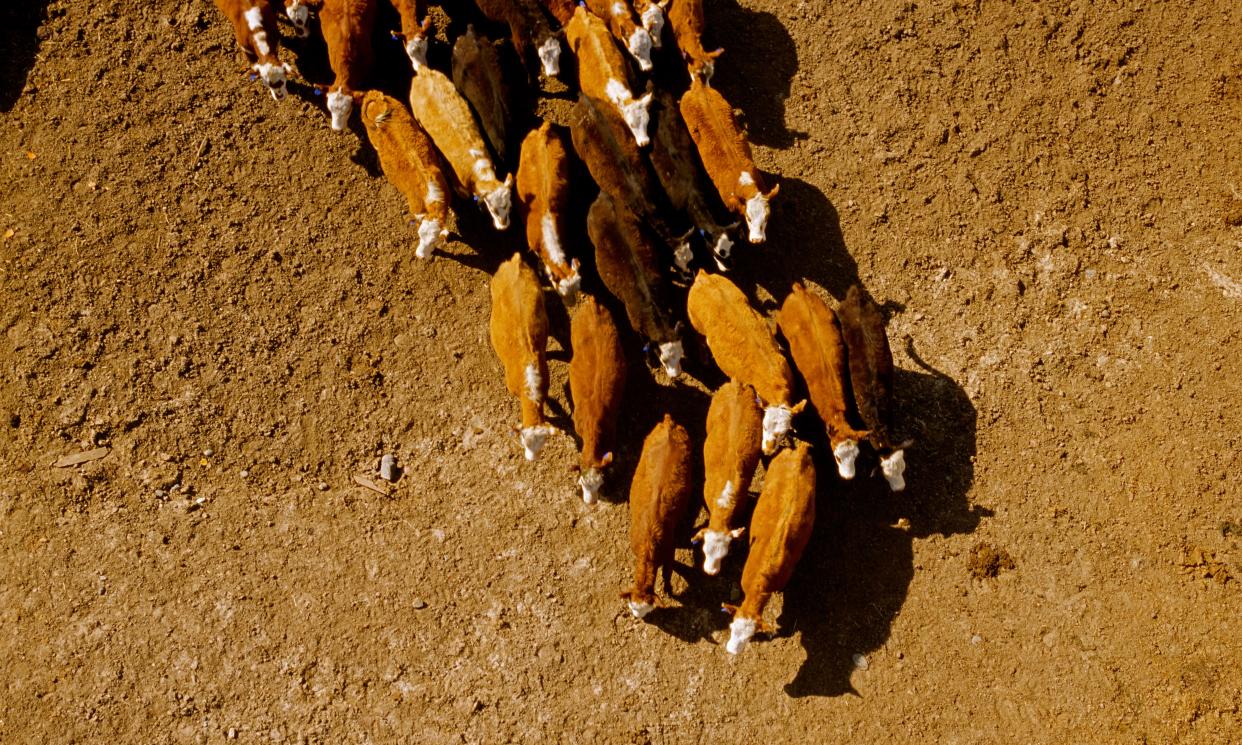Thousands of cattle dead due to heatwave in Kansas

The record-breaking heat sweeping across the US is having a deadly effect on livestock, with Kansas reporting 2,000 cattle dead.
This week, the National Weather Services (NWS) predicted extreme heat on parts of the Gulf coast and spreading to the Great Lakes in the midwest, with more than 100 million Americans advised to stay inside to fight the heat.
Related: Over a third of US population urged to stay indoors amid record-breaking heat
Kansas has also been hard hit and will continue to be. The state is among the top three producers of beef in the country, where there are twice as many cows as people, and beef is among its top exports.
According to the United States Environmental Protection Agency (EPA), heatwaves in the US have steadily gone up by frequency, duration and intensity in four decades since the 1960s.
It says the annual number of heatwaves rose from two in the 1960s to six in 2010s. Heatwave seasons now accumulate more days than in past decades: whereas in the 1960s the heatwave season would last about 20 days, by the 2010s it reached 70 days on average.
“What is clear is that the livestock (and human, for that matter) heat stress issue will become increasingly challenging for livestock farmers to deal with, as the world warms,” said Philip Thornton, a climate researcher and professor who authored a 2021 report on the impact of increasing heat on livestock.
Gerald C Nelson, his co-author in the report, shared a more personal account.
Nelson, an agriculture economist and professor emeritus at the University of Illinois Urbana-Champaign (UIUC), is from a cattle ranching family. In the past two years alone, his only cousin who remained on the farm has witnessed catastrophic damage: extreme drought, a wildfire that destroyed much of his grazing area and extensive damage to physical infrastructure.
Thornton, who is a research strategist at the Netherlands Food Partnership and a professor at the University of Edinburgh, said there were measures that farmers could take to care for their cattle during such extreme heat, but it depends on feasibility.
He suggested improving ventilation and cooling systems and for outdoor production, feed additives can help address the heat stress in some cases.
But it could raise the cost, he added. That may be an issue given that farmers are already struggling with increasing cost of cattle feed following Russia’s invasion of Ukraine and the impact on global grain supplies.
“In the long run, the most effective way to address the challenge is to redouble our collective efforts to reduce greenhouse has emissions as quickly and as comprehensively as possible,” he said.

